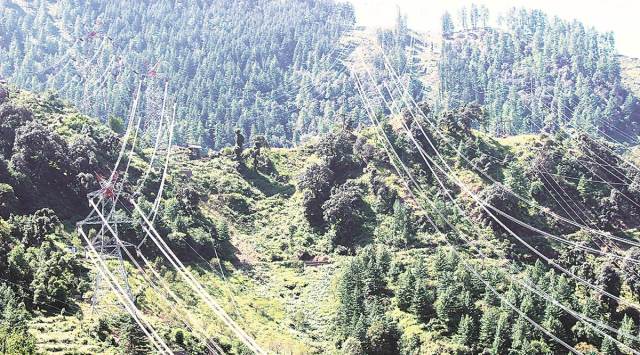- India
- International
Only 10% saplings planted on paper found at site, survival rate low: study
The study, conducted between 2012 and 2016, has been carried out by Himdhara Environment Research and Action Collective and is based on government data and ground research.
 Kinnaur is Himachal’s hydropower hub. (Express photo: Prerna Nair)
Kinnaur is Himachal’s hydropower hub. (Express photo: Prerna Nair)A study that looks at compensatory afforestation in lieu of forest diversion for development of projects in Himachal Pradesh’s Kinnaur district has found that only 10 per cent of saplings said to be planted were actually found on the site.
The study also found that the survival rate of saplings in some plots was as low as 3.6 per cent.
The study, conducted between 2012 and 2016, has been carried out by Himdhara Environment Research and Action
Collective and is based on government data and ground research.
As of March 31, 2014, the total area demarcated for compensatory afforestation was 1,930 ha in lieu of 984 ha of forest land diverted for non-forest activities, including roads, hydro-projects, transmission lines etc.

Between 2002 and 2014, of the Rs 162.82 crore collected under Catchment Area Treatment (CAT) plan funds of Kinnaur’s projects, only 36 per cent had been spent till March 31, 2014, says the study. CAT plan funds are budgeted as mitigation measures for hydroelectric power projects.
Kinnaur Forest Division received another Rs 11.50 crore between 1980 and 2013 for compensatory afforestation after forest land was diverted for hydropower projects.
More than 90 per cent of the diversion of forest in Kinnaur takes place for the development of hydropower projects and transmission lines. Himachal Pradesh has the highest installed capacity of hydropower projects of 10,000 MW in the country, and located in Sutlej basin, Kinnaur is the state’s hydropower hub with 53 planned hydropower projects.
According to Compensatory Afforestation Management and Planning Authority (CAMPA) rules, for every hectare of forest land diverted, double the area of ‘degraded’ lands are used as sites for ‘compensatory afforestation’.
In Kinnaur, a total of 984 ha of forest land has been diverted for development activities out of which 867 ha of forest land has been transferred for 10 big projects, 12 small hydroelectric power plants and 11 transmission lines, as of 2014.
In the case of the 1000 MW Karchham Wangtoo project, 180 ha of forest land was diverted for the main project activities, and another 323 ha for transmission lines.
Cumulatively, 503 hectares of forest land was diverted for the entire project in four separate forest divisions, with a total of 1,287 trees felled for the main project, and 3,924 felled for construction of the transmission lines.
The total diverted forest land in Kinnaur had 11,598 standing trees, belonging to 21 species, says the study. The majority of the trees felled were coniferous, dominated by cedar (3,612 felled) and rare and endangered chilgoza pines (2,743).
There are 10 projects for which 415 hectares of forest land from Chilgoza forest belt has either been diverted or will be diverted.
“One of the reasons why the forest department is unable to fulfil the target is because there’s simply no land available for this compensatory afforestation. A large part of Kinnaur is rocky and a cold desert where nothing grows. Around 10 per cent of the district is already forests and the rest is either used for agriculture or are grasslands. During our field visits, we realised that many of the plots carved out for afforestation are actually grasslands. These grasslands are used by the villagers for grazing cattle, and the grass is also stored and used as fodder for the winter months. So in many instances the villagers uproot the saplings because they don’t want the grassland converted to a forest,’’says author Prakash Bhandari, adding that this lack of land for afforestation means that once a forest has been felled, it is often lost permanently.
In three of the 22 plots surveyed, no saplings were found at all. “Ground staff of the forest department have told us on site visits that once the land is earmarked, the planting of the saplings have to take place, but these are areas which are not conducive to growth and therefore the rate of sapling survival is very low. On record, however these plots are afforested,’’Prakash adds.
“The conceptualisation of CAMPA is faulty. The authorities only look at identifying plots of land where afforestation can take place because it is mandated. The socio-economic needs are not considered. There is also no monitoring of the afforestation whatsoever,’’ says author Manshi Asher.
Rapidly running out of space for compensatory afforestation, the Forest Department has now decided to carry out plantations in other districts in lieu of forest land diverted in Kinnaur.
Apr 18: Latest News
- 01
- 02
- 03
- 04
- 05






































